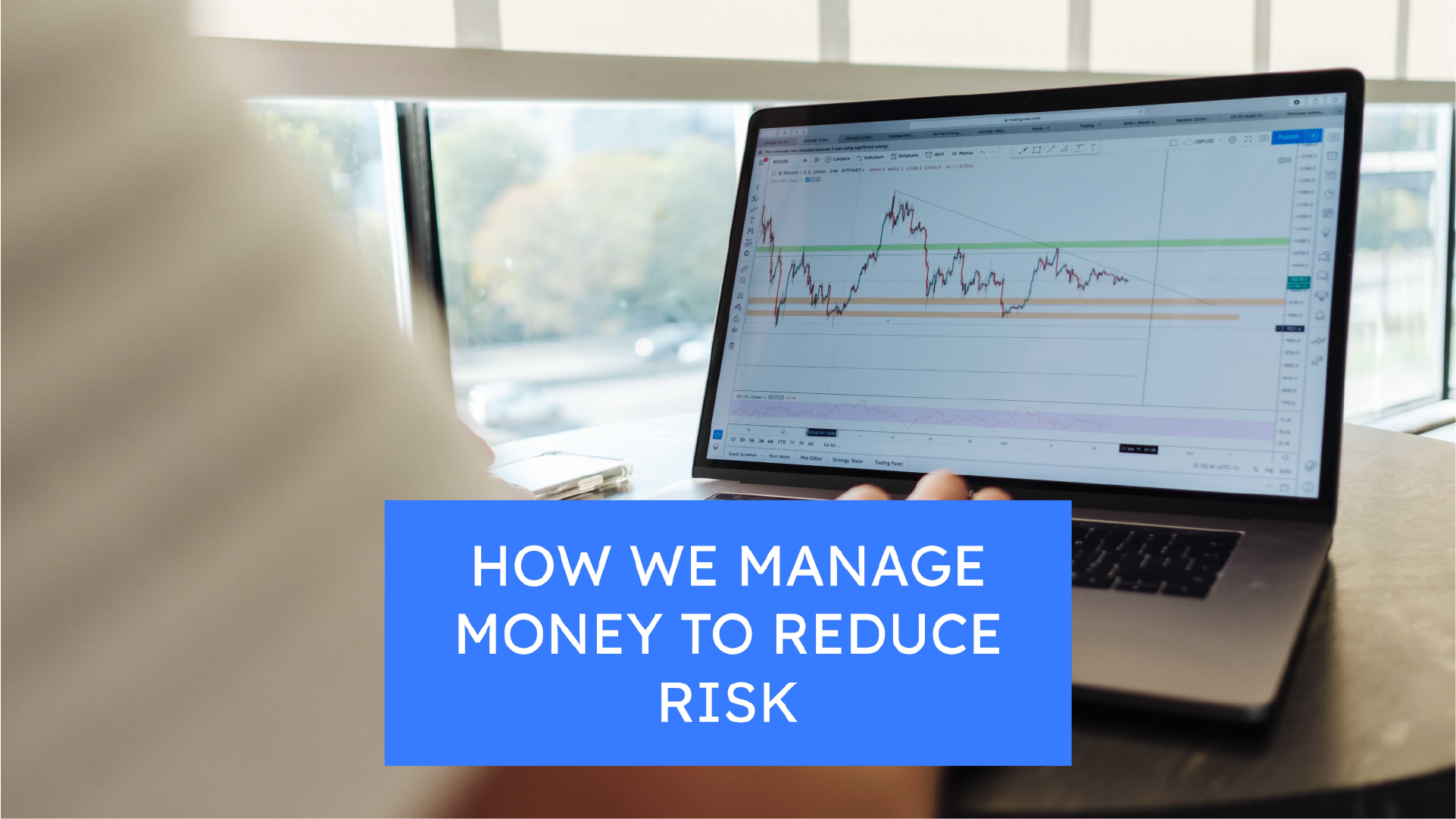
There are many ways to invest your money in the public market to gain exposure to domestic companies, international organizations, or various asset classes like the ones determined by Morningstar.
You can buy stocks, bonds, real estate—and that’s just the beginning.
If you’re willing to spend some time doing research, you can go further down the investing pyramid—deciding whether to buy and hold individual stocks or let index funds do the investing for you. You can purchase active mutual funds, or actively trade a portfolio on your own.
Here at Potomac, we are a tactical money manager that specializes in risk reduction. Our chosen investment vehicles are mutual funds and ETFs. However, it is important to note that the definition of a tactical manager can vary among this management approach.
So, let me be clear about our tactical investing beliefs. Here is what we believe:
- We believe you need to reduce risk by managing your maximum drawdown. This is just math. If your portfolio declines by 50% from its peak, you need to double your money just to break even. But, if your portfolio declines by 25%, you only need 33% to be back to your prior peak.
- We do not believe you need to be exposed to equities or any other asset class 100% of the time. Contrary to what has become popular, we believe in “timing” the market, not “time in” the market.
There will be periods when you need to reduce your overall risk levels, whether because you’re about to retire or the inherent risk in the market at a given time doesn’t match your tolerance for risk.
However, let’s be crystal clear: there is no perfect investment style, and every approach has its flaws.
Tactical investing is no exception! Nonetheless, for us, this approach is the best style of management to achieve our goals of generating returns for our clients while avoiding catastrophic drawdowns that can devastate a portfolio.
Our management process can be broken down into two categories, which I’ll discuss in the remainder of this blog.
Once you have finished reading, you will have a comprehensive understanding of Potomac’s process in determining the appropriate level of risk for a portfolio and how we decide to invest.
How Much Risk Should We Take?
The first step in our investment process is to identify trends that indicate the strengths or weaknesses in the current market environment.
The fundamental question we aim to answer is, “How much risk is currently in the market?”.
Once we make this determination, then we review whether we want to be fully invested or allocate a certain percentage of the portfolio to cash.
Our process involves analyzing a universe of over 100 technical trading indicators, which are built on a robust technology platform. Each indicator undergoes rigorous testing on an individual basis to determine the parameters provide the most reliable indication of probable market direction. The technical trading indicators are then combined into sophisticated algorithmic composites that guide our decision-making process. Now, let’s delve deeper into our process.
Our composite trading systems are best described as a combination of base and trigger systems.
Base System: These trading systems trade infrequently to capture long-term trend changes. They typically cover multiple data points over a longer time horizon.
An example of a base systems we could use is a momentum system, which is a riff on a system originally created by the late Nelson Freeburg.
The system utilizes a point-based approach that examines the long-term moving average crossover of five data points: The S&P 500, NYSE Advance Decline Line, Dow Jones Transports, Dow Jones Utilities, and Dow Jones Corporate Bond index.
The reason we consider this a “base” system is because it covers a wide range of data points including a broad market and breadth index, in addition to both economic and interest rate sensitive indices. This single system encapsulates the three key components of our technical analysis framework: trend analysis, breadth analysis, and intermarket analysis.
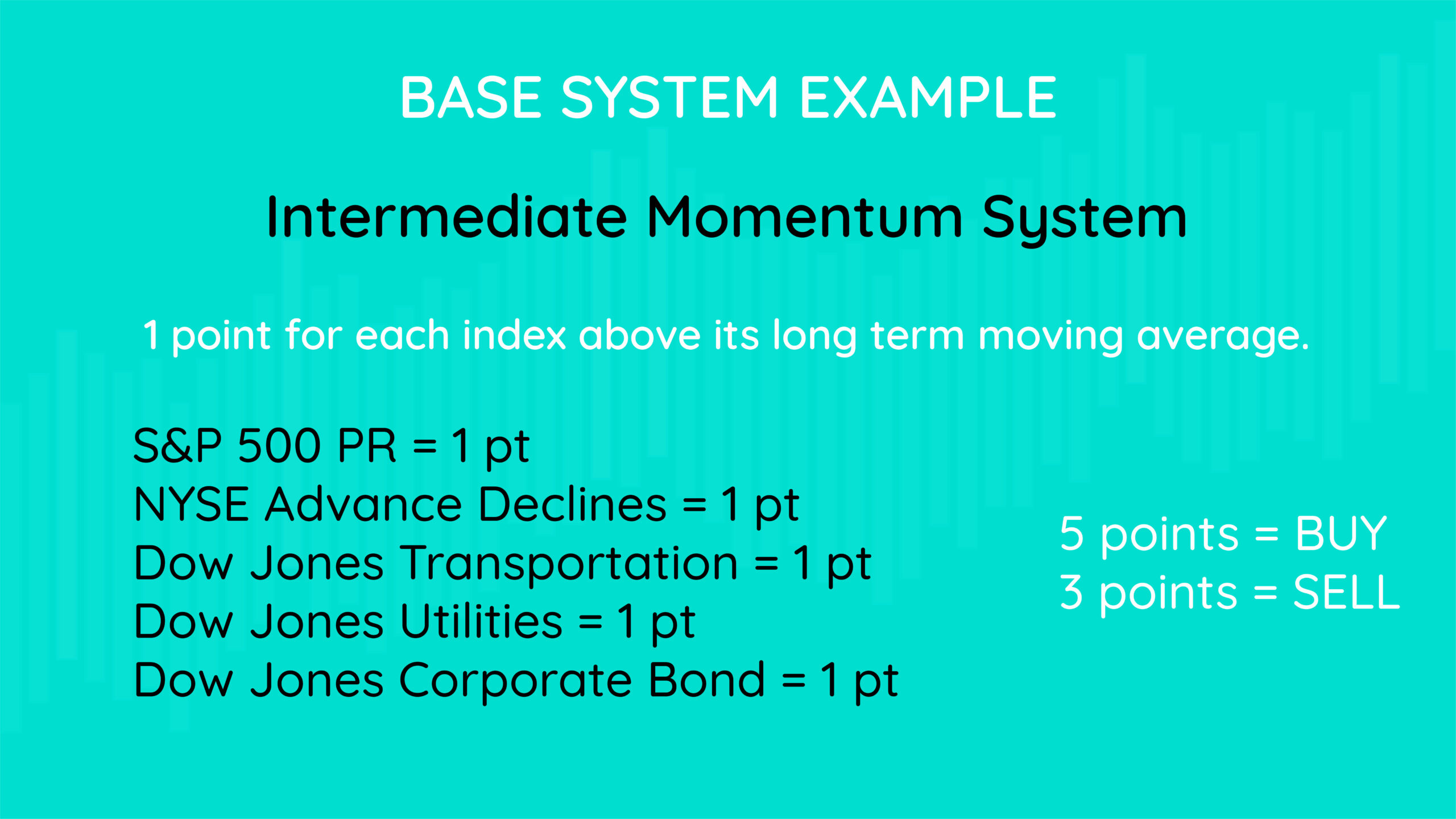
If all five data points are above their long-term averages, the trend would be considered bullish. Conversely, if three out of the five data points fall below their long-term averages, it would be considered bearish.
This base system could be used on its own with great success. It provides investor a “process” to exit the market when long-term trends break down. Like anything else, however, it is not perfect and requires discipline to execute effectively.
Next, we then take a base system like our Intermediate Momentum System and add various Trigger systems.
Trigger Systems: These systems aim to capture short-term market inefficiencies that generate high returns while invested.
While here are many trading systems that can generate short-term returns—frankly, they don’t happen very often. Therefore, to enhance their effectiveness, they need to be incorporated into a longer term “base system” model.
A prime example of a “trigger” system is a Volume Burst system, which measures extreme bursts in the NYSE trading volume. Historically, a short-term volume burst is followed by a short-term market advance.

The above system is quite simple as it involves identifying a short-term volume burst and holding that trade for only 15 days. Obviously holding something for 15 days after one technical occurrence is ridiculous and not a standalone strategy.
However, imagine if you could discover numerous trigger systems that, when combined with a base system, are able to generate excellent risk-adjusted returns.
We continuously repeat the process of analyzing the combination of both base and multiple trigger systems. The iterative process provides insights into the current investing climate and helps us determine how much risk we are willing to take.
By designing a composite trading system that incorporates both base and trigger systems, we gain valuable guidance on how much risk we should take in our investment approach.
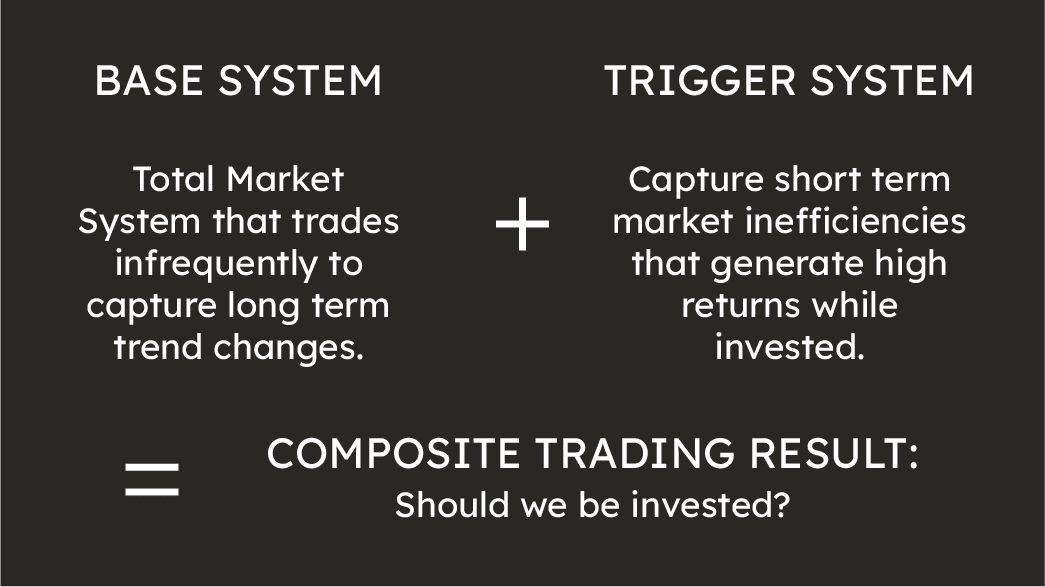
Source: YCharts 12/31/2018
Where Do We Want to Be Invested?
Conventional asset allocation promotes the importance of diversifying across a variety of asset classes. In theory, if your assets are spread across various asset classes, the risk of one underperforming asset class taking down the entire portfolio is significantly reduced.
For instance, let’s examine a strategic buy-and-hold moderate allocation from Schwab. We aren’t picking on Schwab, as virtually all custodians have a similar strategic “buy & hold” portfolio for sale built on generic diversification principles.
While minor adjustments may occur over time, overall, this portfolio will hold this breakdown of asset classes in perpetuity.
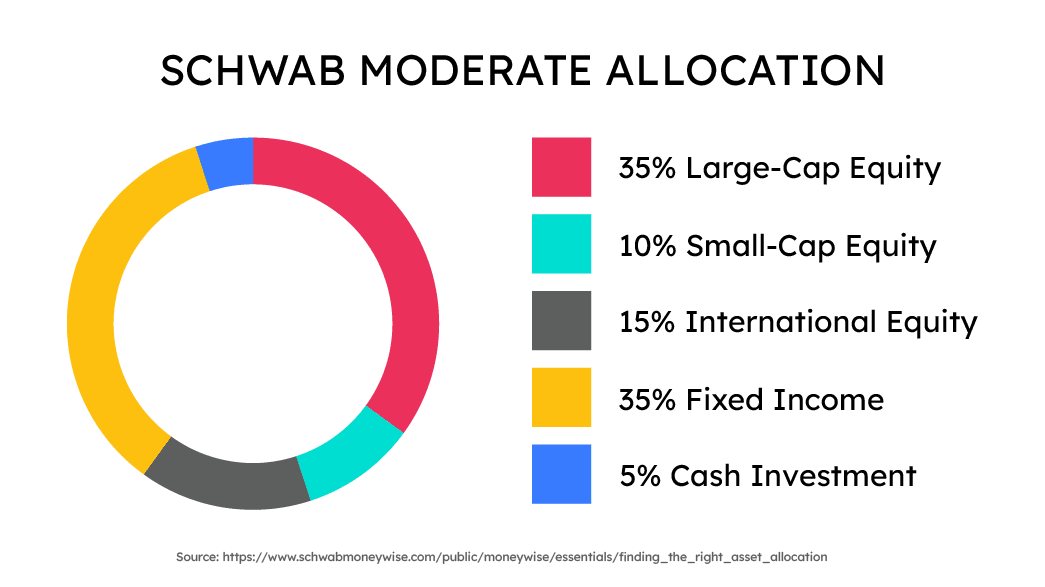
We don’t believe in always diversifying among asset classes.
Yes, you heard that correctly; we don’t believe in diversification in the traditional sense.
While it’s important to diversify your trading strategies or style, blindly holding an asset class in perpetuity doesn’t make much sense to us.
International stocks have trailed the US for over 20 years on a risk and return basis, yet traditional buy-and-hold diversifications continues to recommend holding a certain percentage of them. Conventional wisdom advises you to deliberately hold an underperforming asset that is acting as a drag on the portfolio.
Our belief has always been to hold the leading assets at the right time, which is known as momentum investin g—a form of trend following. We want to actively tilt/shift our exposure to the few asset classes that are performing well in the current market environment.
Here is a simple example that can be used by an investor who is seeking broad equity exposure, particularly one who may be more conservative. By sorting the 11 sectors of the S&P 500 by their trailing six-month returns, this approach would lead this investor to focus on the Communication Services, Technology, Consumer Discretionary, and Industrial sectors.

A more aggressive investor may look to the industry level and notice that within the Technology sector, both Semiconductors and Software are leading.

Different risk levels will necessitate different percentage allocations, and these strategies don’t apply to everyone, but you get the point…
Long-Term Investing Success is Personal
Markets are cyclical and the strategy de jour is passive investing. While passive investing certainly has its benefits, the associated risk levels may be too high for many investors, including myself. Remember, passive investments in an index expose the investor to the entire drawdown of that index.
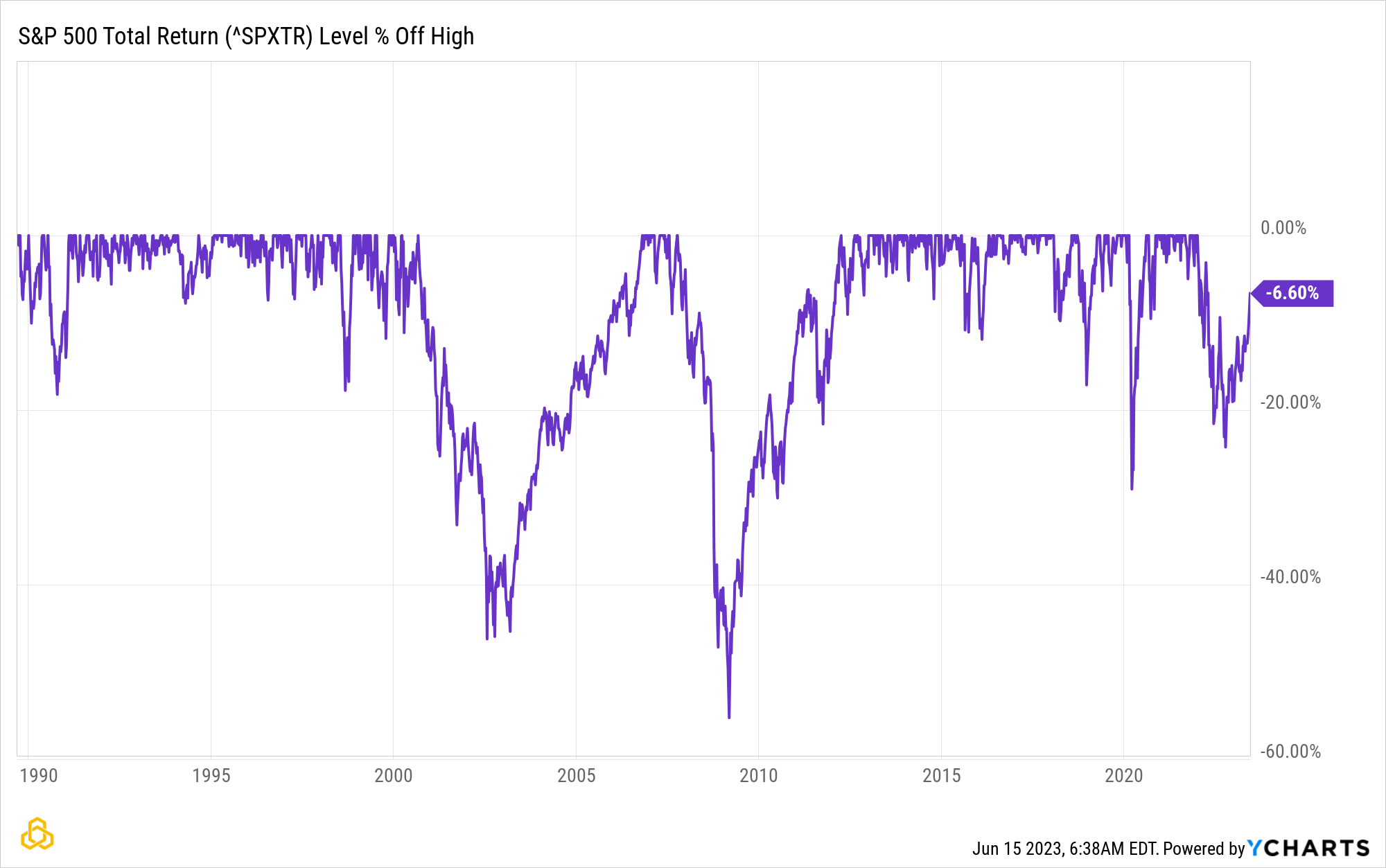
We don’t live in charts, so telling an investor to sit through a -50% decline and actually living through that decline are vastly different. Therefore, we have developed another way to approach investing, with the concept of risk front and center.
The truth is, that there is no perfect investing style, and the only ones who claim otherwise are charlatans.
Ultimately, the first step for every investor is to develop their own personal tolerance for risk. Unfortunately, no one can do that but the investor.
Once you have established your risk tolerance, work backwards to identify investments that align with your risk score. Just like a diet, the best investing style is the one you can stick with for the long haul.
Happy investing….
Potomac Fund Management ("Potomac") is an SEC-registered investment adviser. SEC registration does not constitute an endorsement of the advisory firm by the SEC nor does it indicate that the advisory firm has attained a particular level of skill or ability. This information is prepared for general information only and should not be considered as individual investment advice nor as a solicitation to buy or offer to sell any securities. This material does not constitute any representation as to the suitability or appropriateness of any investment advisory program or security. Please visit our FULL DISCLOSURE page. Potomac does not make any representations or warranties as to the accuracy, timeliness, suitability, completeness, or relevance of any information prepared by any unaffiliated third party, whether linked to the Potomac website or incorporated herein, and takes no responsibility for any of this information. The views of Potomac are subject to change and Potomac is under no obligation to notify you of any changes. Different types of investments involve varying degrees of risk, and there can be no assurance that the future performance of any specific investment or investment strategy will be profitable or equal to any historical performance level.
PFM-614-20230623
